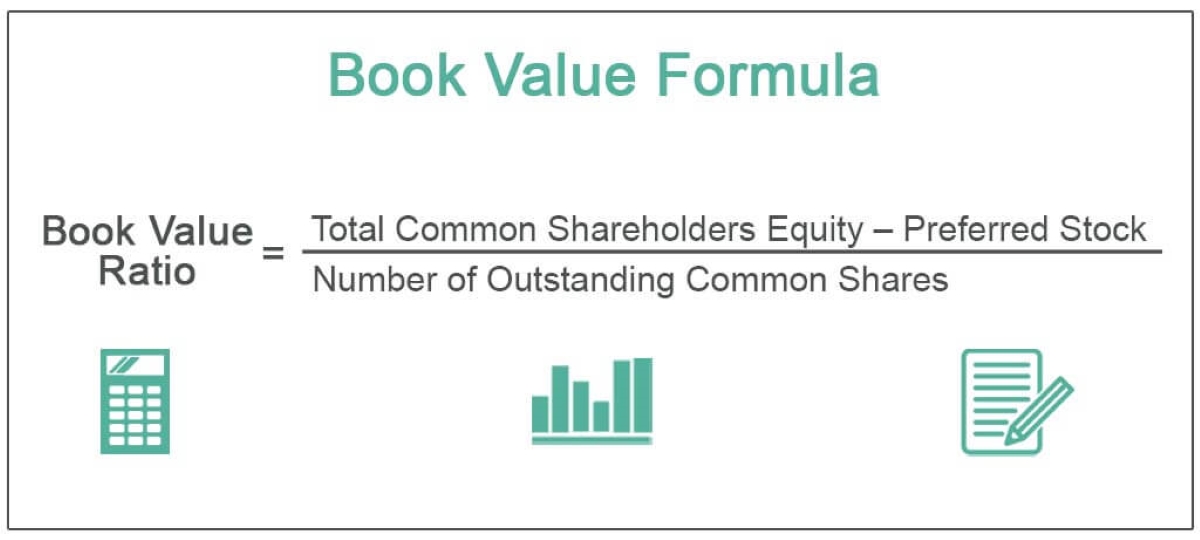Home>Finance>Book Value Per Share (BVPS): Definition, Formula, How To Calculate, And Example


Finance
Book Value Per Share (BVPS): Definition, Formula, How To Calculate, And Example
Published: October 18, 2023
Discover the finance term Book Value Per Share (BVPS) and learn its definition, formula, calculation process, and get an example to understand its practical application.
(Many of the links in this article redirect to a specific reviewed product. Your purchase of these products through affiliate links helps to generate commission for LiveWell, at no extra cost. Learn more)
Book Value Per Share (BVPS): Definition, Formula, How to Calculate, and Example
Have you ever wondered how much a company’s shares are really worth? Understanding a financial metric known as Book Value Per Share (BVPS) can give you valuable insights into a company’s financial health. In this blog post, we will explore the meaning of BVPS, explain its formula, provide step-by-step instructions on how to calculate it, and offer a practical example to help illustrate its importance.
Key Takeaways:
- Book Value Per Share (BVPS) is a financial metric used to assess the per-share value of a company’s equity.
- BVPS is calculated by dividing a company’s total shareholders’ equity (excluding preferred stock) by the number of outstanding common shares.
What is Book Value Per Share (BVPS)?
Book Value Per Share (BVPS) is a fundamental financial metric that represents the equity attributable to each outstanding common share of a company. In simple terms, it is the value each share would be worth if the company were to liquidate its assets and settle all outstanding liabilities.
BVPS provides clues about a company’s financial health, particularly in terms of the net worth it has generated over time. Comparing a company’s BVPS to its market price per share can also shed light on whether the stock is overvalued or undervalued in the market.
How to Calculate Book Value Per Share (BVPS)
The formula to calculate BVPS is straightforward:
BVPS = (Total Shareholders’ Equity – Preferred Stock) / Number of Outstanding Common Shares
To calculate BVPS, you’ll need two key inputs:
- Total Shareholders’ Equity: This represents the net assets of the company after deducting liabilities. It includes common equity and retained earnings but excludes preferred stock.
- Number of Outstanding Common Shares: This refers to the total number of common shares issued by the company.
Once you have these inputs, you can use the formula above to calculate BVPS.
Example: Calculating Book Value Per Share (BVPS)
Let’s consider a hypothetical company, ABC Corporation. We will assume the following financial data for ABC Corporation:
- Total Shareholders’ Equity: $1,000,000
- Preferred Stock: $100,000
- Number of Outstanding Common Shares: 100,000
Using the formula mentioned earlier, we can calculate the BVPS for ABC Corporation:
BVPS = ($1,000,000 – $100,000) / 100,000
Simplifying the calculation further:
BVPS = $900,000 / 100,000
Thus, the Book Value Per Share (BVPS) for ABC Corporation is $9.00.
Wrap Up
Understanding Book Value Per Share (BVPS) provides investors with valuable insights into a company’s financial standing and its per-share equity value. By comparing BVPS to the market price per share, investors can assess whether a stock is overvalued or undervalued in the market.
Key Takeaways:
- Book Value Per Share (BVPS) is a financial metric used to assess the per-share value of a company’s equity.
- BVPS is calculated by dividing a company’s total shareholders’ equity (excluding preferred stock) by the number of outstanding common shares.
Next time you analyze stocks or evaluate a company’s financials, make sure to consider the Book Value Per Share (BVPS) metric and its implications. Incorporating this important metric into your financial analysis toolbox will help provide a more comprehensive perspective on a company’s intrinsic value.














